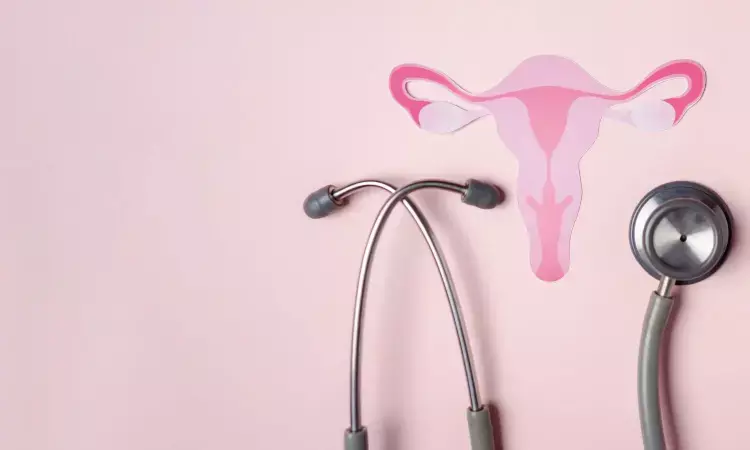- Home
- Medical news & Guidelines
- Anesthesiology
- Cardiology and CTVS
- Critical Care
- Dentistry
- Dermatology
- Diabetes and Endocrinology
- ENT
- Gastroenterology
- Medicine
- Nephrology
- Neurology
- Obstretics-Gynaecology
- Oncology
- Ophthalmology
- Orthopaedics
- Pediatrics-Neonatology
- Psychiatry
- Pulmonology
- Radiology
- Surgery
- Urology
- Laboratory Medicine
- Diet
- Nursing
- Paramedical
- Physiotherapy
- Health news
- Fact Check
- Bone Health Fact Check
- Brain Health Fact Check
- Cancer Related Fact Check
- Child Care Fact Check
- Dental and oral health fact check
- Diabetes and metabolic health fact check
- Diet and Nutrition Fact Check
- Eye and ENT Care Fact Check
- Fitness fact check
- Gut health fact check
- Heart health fact check
- Kidney health fact check
- Medical education fact check
- Men's health fact check
- Respiratory fact check
- Skin and hair care fact check
- Vaccine and Immunization fact check
- Women's health fact check
- AYUSH
- State News
- Andaman and Nicobar Islands
- Andhra Pradesh
- Arunachal Pradesh
- Assam
- Bihar
- Chandigarh
- Chattisgarh
- Dadra and Nagar Haveli
- Daman and Diu
- Delhi
- Goa
- Gujarat
- Haryana
- Himachal Pradesh
- Jammu & Kashmir
- Jharkhand
- Karnataka
- Kerala
- Ladakh
- Lakshadweep
- Madhya Pradesh
- Maharashtra
- Manipur
- Meghalaya
- Mizoram
- Nagaland
- Odisha
- Puducherry
- Punjab
- Rajasthan
- Sikkim
- Tamil Nadu
- Telangana
- Tripura
- Uttar Pradesh
- Uttrakhand
- West Bengal
- Medical Education
- Industry
Purple line, a non-invasive method for labour progress assessment: Study

Greece: The purple line, a visual indicator that appears on a labouring woman's buttocks, has been proposed as a non-invasive method for labour progress assessment, according to a recent study published in the European Journal Of Obstetrics & Gynaecology And Reproductive Biology.
The systematic review and meta-analysis of studies exploring the purple line's association with cervical dilatation during active labour have revealed promising findings published by Dimitrios Papoutsis and colleagues.
The primary objective of this study was to investigate the relationship between the length of the purple line and cervical dilatation during active labour. Secondary objectives included assessing the connection between the purple line's length and fetal head descent, as well as calculating the mean length of the purple line at cervical dilatations of 3-4 cm and 9-10 cm.
Researchers conducted a thorough search of databases such as Medline, Scopus, Cochrane Central Register of Controlled Trials (CENTRAL), Clinical Trials.gov, and Cochrane Pregnancy and Childbirth's Trials Register, spanning from inception to March 25, 2023.
● Six eligible studies involving a total of 982 women, with the purple line observed in 760 cases (77.3%), were included in the systematic review.
● The findings demonstrated a moderate positive correlation between the purple line's length and cervical dilatation (r = +0.64; 95%CI: 0.41–0.87) as well as fetal head descent (r = +0.50; 95%CI: 0.32–0.68).
● Moreover, the pooled mean length of the purple line exceeded 9.4 cm at a cervical dilatation of 9-10 cm and exceeded 7.3 cm at a dilatation of 3-4 cm for women in both spontaneous and induced labour.
These results suggest that the purple line could serve as a valuable adjunct for assessing labour progress in a non-invasive manner. The purple line's length appears to be closely associated with cervical dilatation and fetal head descent, offering healthcare professionals a visual clue to monitor labour's advancement.
While further research and validation are needed, this innovative approach holds promise for enhancing labour assessment, potentially leading to improved maternal and fetal care during childbirth.
Reference:
Papoutsis, D., Antonakou, A., Gornall, A., & Tzavara, C. (2023). The purple line and its association with cervical dilatation in labour: A systematic review and meta-analysis. European Journal of Obstetrics, Gynecology, and Reproductive Biology, 289, 91–99. https://doi.org/10.1016/j.ejogrb.2023.08.383
Dr Kamal Kant Kohli-MBBS, DTCD- a chest specialist with more than 30 years of practice and a flair for writing clinical articles, Dr Kamal Kant Kohli joined Medical Dialogues as a Chief Editor of Medical News. Besides writing articles, as an editor, he proofreads and verifies all the medical content published on Medical Dialogues including those coming from journals, studies,medical conferences,guidelines etc. Email: drkohli@medicaldialogues.in. Contact no. 011-43720751


